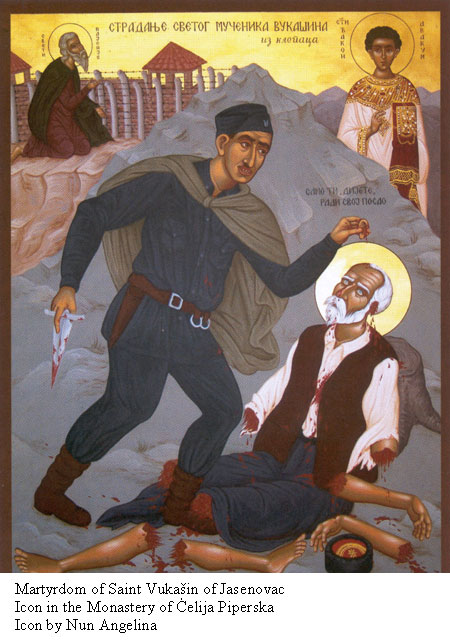Ratlines were a system of escape routes for Nazis and other fascists fleeing Europe at the end of World War II. These escape routes mainly led toward havens in South America, particularly Argentina, Paraguay, Brazil, Uruguay, and Chile. Other destinations included the United States and perhaps Canada and the Middle East. There were two primary routes: the first went from Germany to Spain, then Argentina; the second from Germany to Rome to Genoa, then South America. The origins of the first ratlines are connected to various developments in Vatican-Argentine relations before and during World War II.
The major Roman ratline was operated by a small, but influential network of Croatian priests, members of the Franciscan order, led by Father Krunoslav Draganović. Draganović organized a highly sophisticated chain with headquarters at the San Girolamo degli Illirici Seminary College in Rome, but with links from Austria to the final embarcation point in the port of Genoa. The ratline initially focused on aiding members of the Croatian Ustashe movement, most notably the Croat wartime dictator Ante Pavelić.
Priests active in the chain included: Fr. Vilim Cecelja, former Deputy Military Vicar to the Ustashe, based in Austria where many Ustashe and Nazi refugees remained in hiding; Fr. Dragutin Kamber, based at San Girolamo; Fr. Dominik Mandić, an official Vatican representative at San Girolamo and also "General Economist" or treasurer of the Franciscan order - who used this position to put the Franciscan press at the ratline's disposal; and Monsignor Karlo Petranović, based in Genoa. Vilim would make contact with those hiding in Austria and help them across the border to Italy; Kamber, Mandić and Draganović would find them lodgings, often in the monastery itself, while they arranged documentation; finally Draganović would phone Petranović in Genoa with the number of required berths on ships leaving for South America.
The operation of the Draganović ratline was an open secret among the intelligence and diplomatic communities in Rome. As early as August 1945, Allied commanders in Rome were asking questions about the use of San Girolamo as a "haven" for Ustashe. A year later, a US State Department report of 12 July 1946 lists nine war criminals, including Albanians and Montenegrins as well as Croats, plus others "not actually sheltered in the COLLEGIUM ILLIRICUM [i.e., San Girolamo degli Illirici] but who otherwise enjoy Church support and protection." The British envoy to the Holy See, Francis Osborne, asked Domenico Tardini, a high ranking Vatican official, for a permission that would have allowed British military police to raid ex-territorial Vatican Institutions in Rome. Tardini declined and denied that the church sheltered war criminals.
In February 1947 CIC Special Agent Robert Clayton Mudd reported ten members of Pavelić's Ustasha cabinet living either in San Girolamo or in the Vatican itself. Mudd had infiltrated an agent into the monastery and confirmed that it was "honeycombed with cells of Ustashe operatives" guarded by "armed youths". Mudd also reported: "It was further established that these Croats travel back and forth from the Vatican several times a week in a car with a chauffeur whose license plate bears the two initials CD, "Corpo Diplomatico". It issues forth from the Vatican and discharges its passengers inside the Monastery of San Geronimo. Subject to diplomatic immunity it is impossible to stop the car and discover who are its passengers." Mudd's conclusion was the following:
"DRAGANOVIC's sponsorship of these Croat Ustashes definitely links him up with the plan of the Vatican to shield these ex-Ustasha nationalists until such time as they are able to procure for them the proper documents to enable them to go to South America. The Vatican, undoubtedly banking on the strong anti-Communist feelings of these men, is endeavoring to infiltrate them into South America in any way possible to counteract the spread of Red doctrine. It has been reliably reported, for example that Dr. VRANCIC has already gone to South America and that Ante PAVELIC and General KREN are scheduled for an early departure to South America through Spain. All these operations are said to have been negotiated by DRAGANOVIC because of his influence in the Vatican."The existence of Draganović's ratline has been confirmed by a Vatican historian, Fr. Robert Graham: "I've no doubt that Draganović was extremely active in syphoning off his Croatian Ustashe friends." On four occasions the Vatican intervened on behalf of interned Ustasha prisoners. The Secretariat of State asked the U.K. and U.S. government to release Croatian POWs from British internment camps in Italy.
Related:

No comments:
Post a Comment